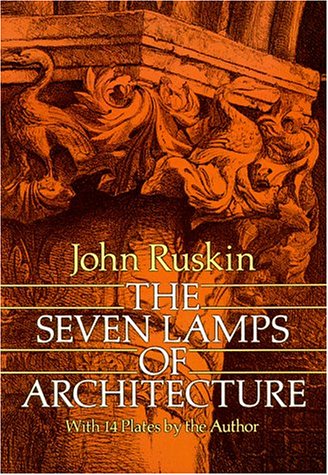
The Seven Lamps of Architecture
by John Ruskin
Publisher: Project Gutenberg 2011
ISBN/ASIN: 048626145X
Number of pages: 210
Description:
Book-length essay on architecture by John Ruskin, published in 1849. According to Ruskin, the leading principles of architecture are the 'lamps' of Sacrifice, Truth, Power, Beauty, Life, Memory, and Obedience. The noblest style of architecture was Gothic, but in time medieval architecture had lost the power to resist innovation.
Download or read it online for free here:
Download link
(multiple formats)
Similar books
 Designing Paris: The Architecture of Duban, Labrouste, Duc, and Vaudoyer
Designing Paris: The Architecture of Duban, Labrouste, Duc, and Vaudoyerby David Van Zanten - The MIT Press
The book explores the revolution in French architecture that began around 1830 under the leadership of Felix Duban, Henri Labrouste, Louis Duc, and Leon Vaudoyer. It shows how these four architects dominated their profession during the Monarchy...
(3479 views)
 Cathedral Cities of Spain: 60 reproductions from original water colours
Cathedral Cities of Spain: 60 reproductions from original water coloursby W. W. Collins
Probably the most interesting moments of the trip abroad by the architectural students are those spent in sketching bits of interest in water color. Nothing is so helpful, so reminiscent as these same notes of color when viewed in alter years.
(16636 views)
 A Text-book of the History of Architecture
A Text-book of the History of Architectureby Alfred D. F. Hamlin - Longmans, Green, & Co.
The aim of this book was to sketch the various periods and styles of architecture with the broadest possible strokes, and to mention the most important works of each period or style. Extreme condensation of architectural history was necessary.
(22364 views)
 The Picturesque Antiquities of Spain
The Picturesque Antiquities of Spainby Nathaniel Armstrong Wells - Project Gutenberg
Some accounts of the author's travels in Spain. Described in a series of letters, with illustrations, representing moorish palaces, cathedrals, and other monuments of art, contained in the cities of Burgos, Valladolid, Toledo and Seville.
(12663 views)